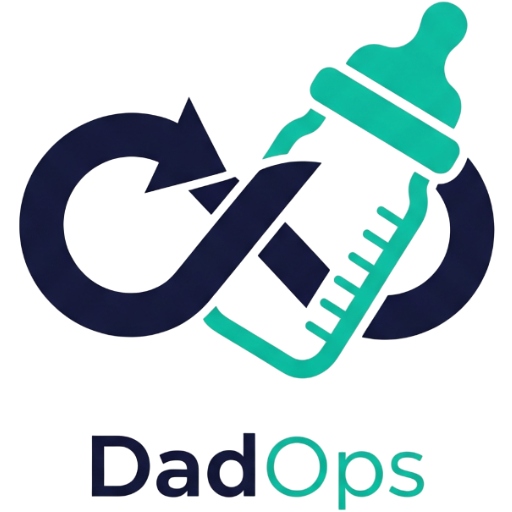You’re prepping for a mission-critical system launch: new human deployment. This isn’t a sandbox environment — it’s prod. The nursery is your primary data center, and Baby is your Tier 0 user. Your job? Ship a safe, secure, scalable environment with a 24/7 uptime SLA and no rollback window.
Let’s get you from chaos to configuration with a step-by-step execution plan that reads like a DevOps deployment playbook.
Phase 1: Scoping and Planning
1.1 Define System Requirements (Specs Gathering)
- Primary User: 0-day-old human with high sensory sensitivity and limited OS capabilities.
- Uptime Expectation: 99.99%, with auto-sleep mode cycles.
- Risk Constraints:
- No loose wiring (entanglement risk)
- No small components (choking hazard)
- No unstable peripherals (topple risk)
📌 Why: You wouldn’t launch a production server without defining latency tolerance and load expectations. Same logic applies.
1.2 Select the Deployment Zone (Server Room Allocation)
Evaluate candidate zones (rooms) using a weighted matrix of key variables:
- Latency Access: Close proximity to parent node (your bedroom)
- Environmental Controls: Lighting, temperature, humidity
- Power Grid Access: At least 2 accessible outlets, surge-protected
- Signal Strength: Ensure coverage if deploying IP-based monitors or smart integrations
📌 Why: Like any data center, your nursery should avoid noisy neighbors, overheating, and dead zones.
Phase 2: Procurement and Hardware Assembly
2.1 Execute Hardware Assembly (Furniture Setup)
Crib (Core Server Rack)
- RTFM: Read the frickin’ manual. This is not IKEA-as-you-go.
- Wall Mounting: Anchor crib if convertible; failed mounts are security vulnerabilities.
- QA Check: No more than 2-finger spacing between mattress and frame.
📌 Pro Tip: Don’t skip the stress test. Shake that thing. If it wobbles, you’re not passing staging.
Changing Table (Live Ops Maintenance Bay)
- Equip with modular toolkits:
- Diapers (multi-size, prefetch enabled)
- Wipes (unscented for sensitive skin APIs)
- Creams (anti-rash patches)
- Backup gear (emergency rollback kits)
📌 Why: Downtime during a critical incident (i.e., diaper blowout) is not an option.
Feeding Chair (Operator Console)
- Must include:
- Armrests (ergonomic support)
- Power plug-ins (device charging)
- Table space (snack and hydration protocols)
📌 Why: If you’re stuck in a long runtime session (clustered feeds at 2 AM), operator stability is key.
2.2 Define the UI/UX (Visual Design Layer)
- Select a minimalist, low-stimulus theme.
- Avoid high-contrast colors or loud patterns — keep the UX gentle and intuitive.
- Add mission branding (custom wall art, nameplates) sparingly.
📌 Why: The user doesn’t have color calibration yet. Harsh UI creates sensory bugs.
Phase 3: Environment Configuration
3.1 Calibrate Environmentals (Climate Subsystems)
- Temp: 20–22°C — use analog or IoT thermometer.
- Humidity: Maintain 40–60%. Deploy humidifier if local air is dry or heating is active.
- Lighting:
- Dimmer-capable bulbs (2700K soft white)
- Blackout curtains for nap scheduling
- Night light for stealth-mode ops
📌 Why: Overheating or overstimulation = performance degradation (cry loops and crash cycles).
3.2 Deploy Safety Protocols (Security Hardening)
- Cable-manage all power cords.
- Install outlet blockers.
- Anchor all top-heavy furniture.
- Run a “Crawl-Level Pen Test” — get low and inspect for vulnerabilities from the user’s POV.
📌 Why: A dangling cable = a zero-day exploit waiting to be pulled.
Phase 4: Software Stack Installation
4.1 Install Monitoring Systems
Primary: A/V Baby Monitor
- Mount high for panoramic coverage.
- Use local + cloud connectivity where available.
- Confirm audio quality and night vision.
Advanced: Environmental & Bio Monitors
- Optional integrations:
- Breathing monitors (real-time status pings)
- Smart temp/humidity sensors (threshold-based alerting)
- Movement mats or wearables (motion tracking)
📌 Why: Think Nagios, but cuter — 24/7 baby monitoring with real-time logs.
4.2 Deploy Background Daemons (Ambient Systems)
- White Noise Generator:
- Static, rainfall, or womb-sound presets
- Loop playback with no hard stop
- Mobile/Projection Units:
- Avoid overly interactive toys. Choose low-input, low-distraction devices.
📌 Why: These daemons keep background noise smooth and system latency (i.e., crying) low.
4.3 Configure Data Logging (Parent-Facing Dashboards)
Install one or more of the following apps:
- Feed & Diaper Logs: BabyTracker, Huckleberry, Glow Baby
- Sleep Analytics: Smart monitor integrations or manual logs
- Growth Charts: Weight, length, head circumference — track and trend
📌 Why: If you don’t log it, you can’t optimize it. Metrics matter.
Phase 5: Final QA and Launch Prep
5.1 Run Pre-Flight Checklist
✅ Crib stable and anchored
✅ Changing station fully stocked
✅ Lighting optimized for nap/night modes
✅ All monitoring systems live and logging
✅ Temperature/humidity within thresholds
✅ All cables and outlets secured
✅ Soft item policy enforced (no pillows, no blankets)
📌 Final Pro Tip: Sleep sacks = safe swaddling containers. Loose blankets = fatal exception risk.
🏁 Go-Live Protocol
- Declare “System Ready” status at least 2 weeks pre-ETA (Estimated Time of Arrival).
- Schedule final walk-through with co-admin (partner).
- Document first 72 hours of logs carefully — adjust based on user feedback (aka crying patterns).
Post-Deployment Maintenance
- Weekly safety audits
- Restock consumables every 48–72 hours
- Rotate toys monthly to avoid visual fatigue
- Update firmware on smart devices quarterly
✅ Mission Accomplished (v1.1)
Congratulations. You’ve provisioned Nursery v1.1, with stable hardware, smart monitoring, ambient daemons, and real-time logging. Like any production environment, this will evolve — expect regular patches, daily builds (diapers), and surprise bug reports (4 AM clusterfeed).
Welcome to DadOps.
Deploy responsibly. Sleep when you can. Patch often.
Want more guides like this? [Subscribe to DadOps Tactical Briefings →]
